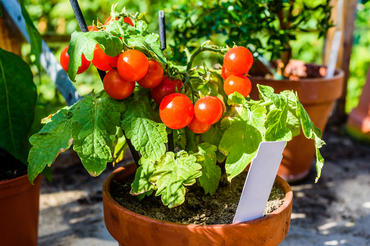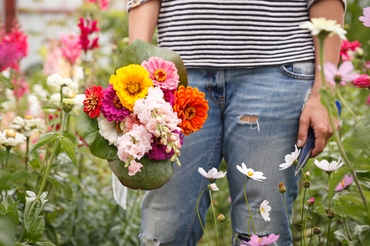Benefits of companion planting
There are so many benefits of companion planting, and how to do it in your garden is really easy with just a few tips. Below you will find our top five tips to start gardening with companion plants, including what companion planting actually means, how to use this technique for the benefit of your garden and yourself, plus which plants are ideal for planting together.

What does companion planting means
Companion planting has been used in gardening for a really long time and means planting certain plants together to either deter pests or to help with growth. It can help your overall harvests and general garden plant health. It’s a sustainable gardening practice and a great way to really get to know your plants and how they complement each other.

Why you should plant companion plants?
Not only will your garden look pretty, but some plants can repel certain pests and attract beneficial insects while other companion plants can fix nitrogen in the soil, which will help plants close by that need high nitrogen to grow well. Other ways of companion planting can be to shade smaller plants by planting tall plants, planting ground cover to suppress weeds and overall increase biodiversity in your garden.
How to grow with companion plants
Start by researching which combinations work well together and learn about which plants should be planted closely and which shouldn’t be planted near each other at all. It can be useful to sketch out on a piece of paper how you will plant your garden with your companions' plants in mind. Since some work well as weed suppressants, consider using companion plants in areas where the soil is bare or is prone to weeds.
Companion planting techniques
Planting flowers like marigolds, nasturtiums, and calendula throughout your garden can attract beneficial insects like ladybugs and bees, which help pollinate your crops and control pests, and if you plant lots of herbs like rosemary, thyme, and sage, they are natural pest repellents so pop them in-between your vegetables. Sacrificial companion planting means pests will be more attracted to the sacrificial plants and leave the ones you want to eat or enjoy.
Which plants are great companions
Companion planting is a gardening technique where certain plants are grown together for mutual benefit. The practice can help improve crop health, attract beneficial insects, deter pests, maximize space, and increase overall yields. Here are some popular and effective companion plants in the garden:

-
Tomatoes and Basil: Planting basil near tomatoes can improve the tomatoes' flavour and repel some pests that commonly affect tomato plants.
-
Carrots and Onions/Chives: Carrots and onions or chives make great companions, as the onion family can help deter pests that affect carrots, and carrots, in turn, can repel onion flies.
-
Lettuce and Radishes: Radishes are quick-growing and can help break up the soil for lettuce, while lettuce provides shade for the radishes, preventing them from bolting too quickly.
-
Cucumbers and Nasturtiums: Nasturtiums act as a natural pest repellent for cucumbers, protecting them from aphids and cucumber beetles.
-
Corn, Beans, and Squash: Known as the "Three Sisters," this classic Native American planting technique involves planting corn, pole beans, and squash together. The corn provides support for the beans to climb, and the squash shades the ground, reducing weed growth and conserving moisture.
-
Marigolds and many plants: Marigolds repel various pests such as aphids, nematodes, and whiteflies. They can be beneficial when planted among tomatoes, peppers, and other garden crops.
-
Rosemary and Sage: These herbs can repel carrot flies and cabbage moths when planted near carrots and cabbage family plants.

-
Sunflowers and Cucumbers: Sunflowers can provide shade and support for cucumber plants as they climb, while cucumbers help deter pests from sunflowers.
-
Garlic and Roses: Garlic can protect roses from aphids and other pests due to its natural repellent properties.
-
Mint and Cabbage: Planting mint near cabbage family plants can help deter cabbage pests like cabbage moths.
Companion planting is a fun way to create a thriving garden. Visit our store for a bunch of companion plants. We've got you covered!





